Sampling Rules Builder
Redesigning the rule configuration experience to bring flexibility, visibility, and scale to win-loss automation. The Sampling Rules builder enables Klue developers and the CS team to define and automate outreach logic for interview sourcing and deal analysis. The new JSON editor and unified configuration flow make it easy to create and validate rules with minimal engineering support, improving speed, accuracy, and confidence in automation setup.
CSM Team
Eng Team
Miro, Pendo
Slite, ChatGPT

Why.
Problem Context
Before the redesign, program managers had to rely on lengthy back-and-forth exchanges with Klue’s Customer Success and Engineering teams to enable or update outreach automation rules. The rule builder itself required technical knowledge and often led to errors from the CS team, creating additional burden for developers.
This manual process delayed client onboarding and limited scalability. Clients also lacked visibility into how their rules were configured or performing, resulting in confusion, misaligned expectations, and a steady stream of support requests.
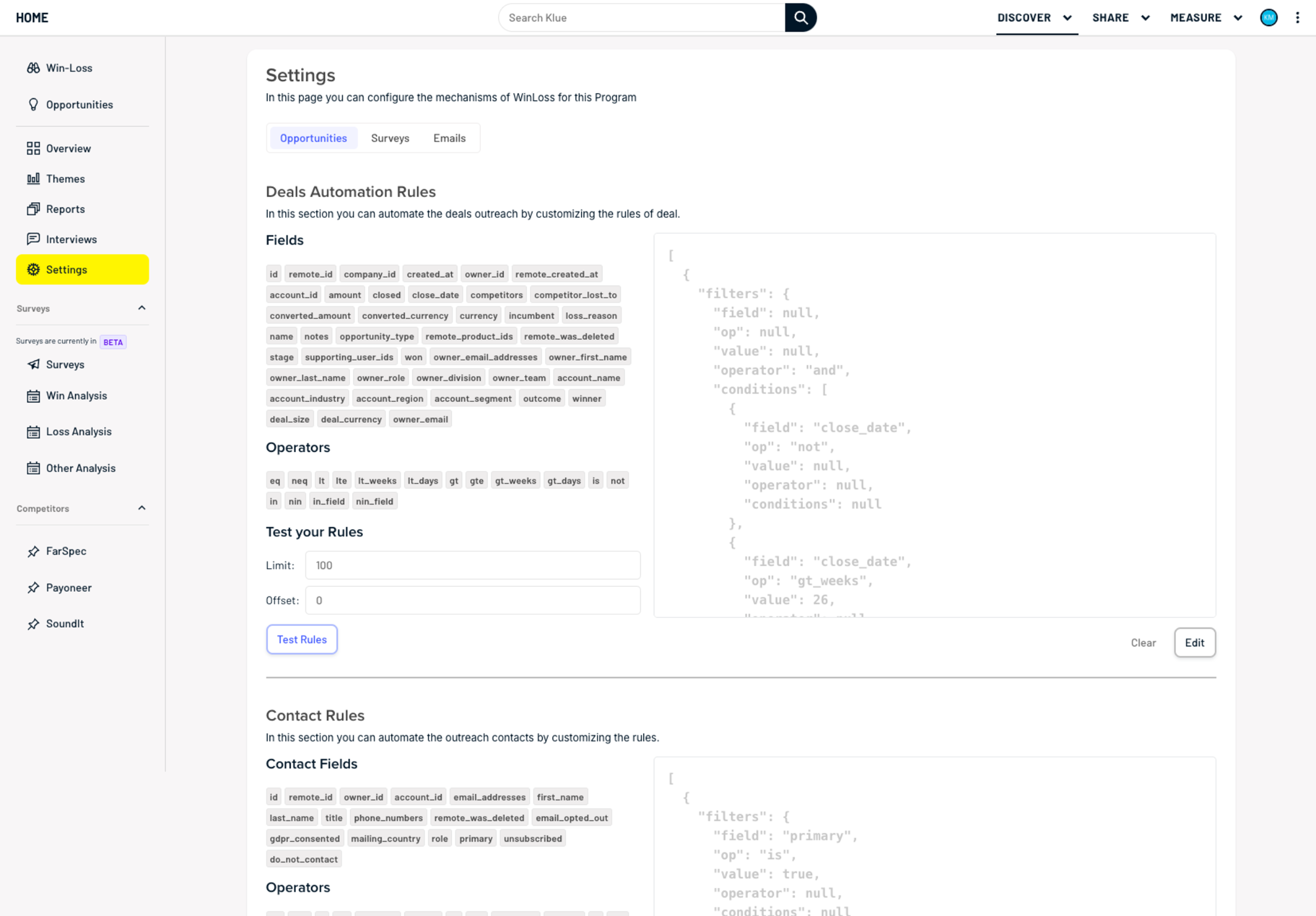
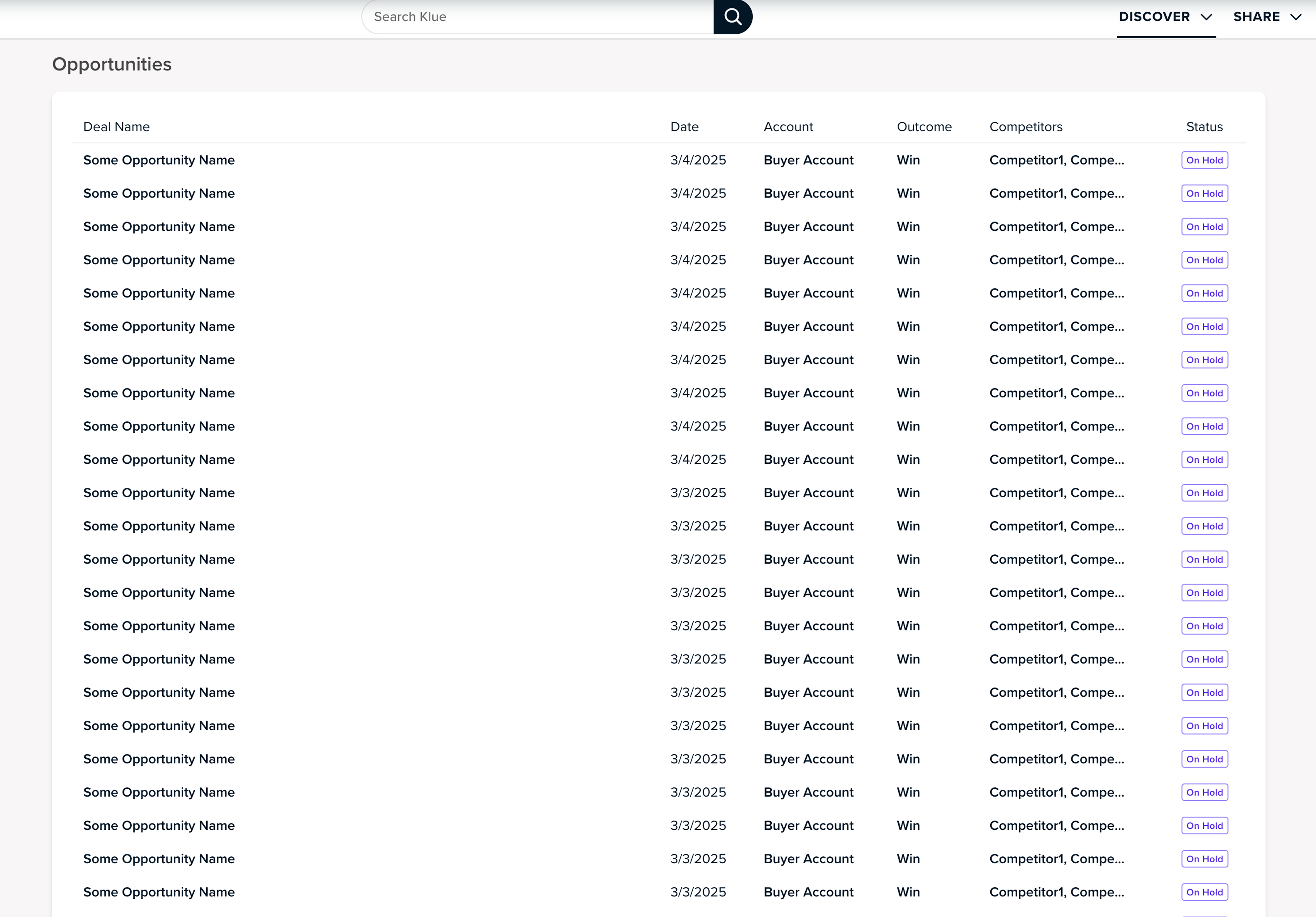
What.
I led discovery through internal interviews and workflow audits across Engineering, Customer Success, and external client teams. I found that most delays stemmed from manual JSON editing, unclear rule logic, and the lack of validation or visibility once rules were live.
These insights guided the redesign of the Sampling Rules Builder, introducing a query builder powered by AI prompting, an interactive JSON editor, built-in validation, and real-time rule status, transforming a complex, technical setup into a fast, transparent, and scalable experience.
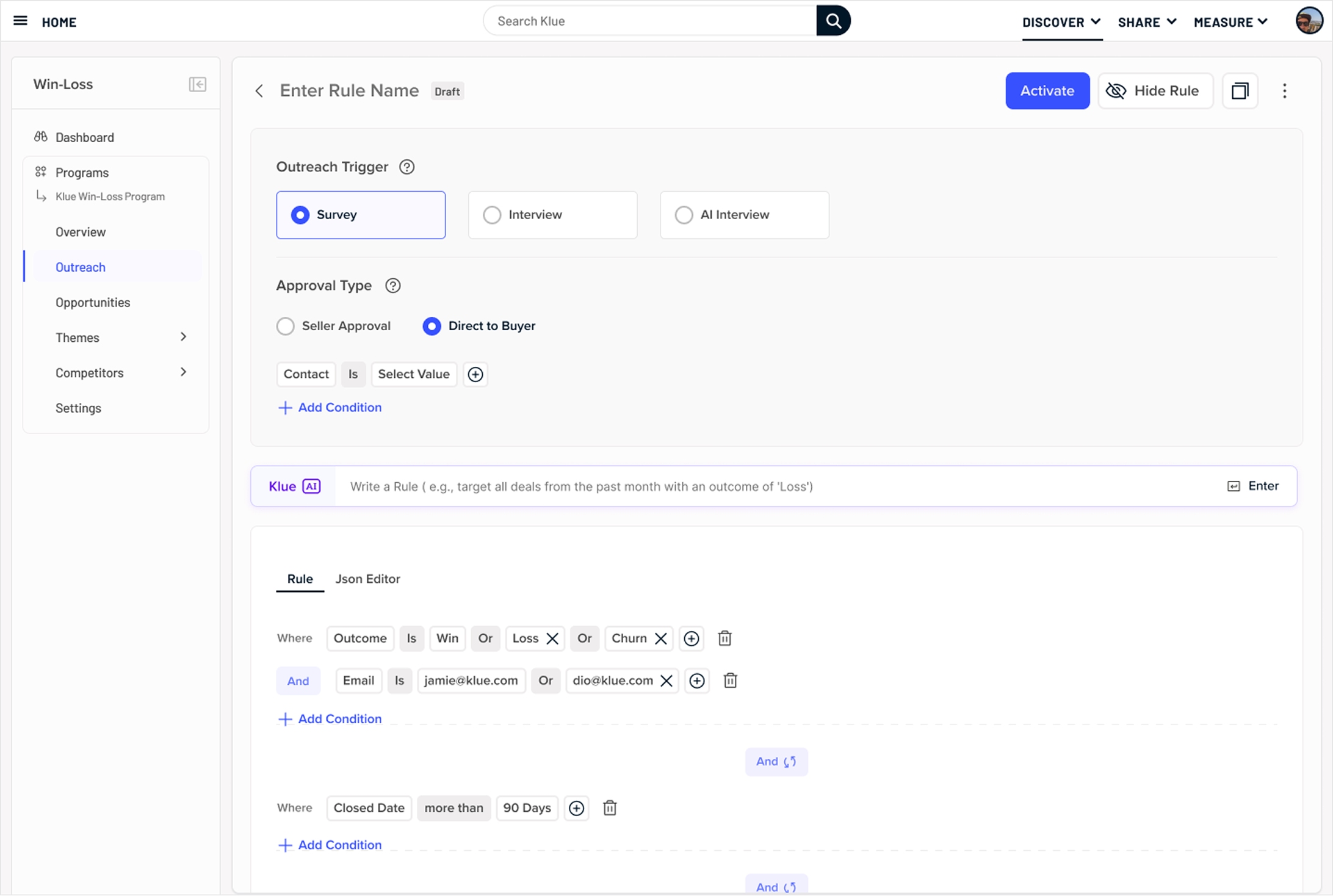

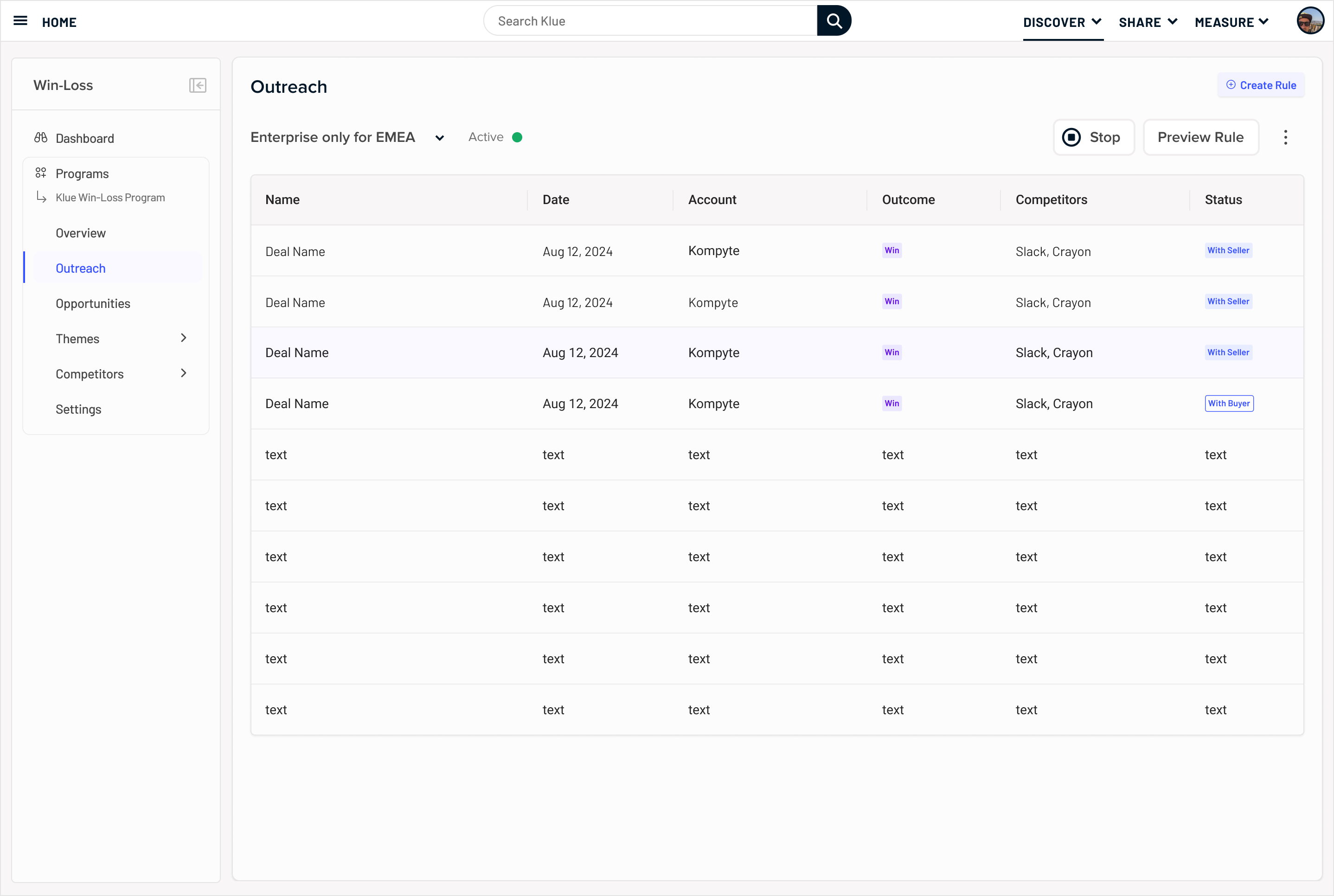
Execution
I structured the interface into two clear parts: the initial setup for defining triggers and approval types, and the rule configuration for building sampling logic. Within the rule builder, an AI-powered query builder allows users to create rules using natural language, while a manual JSON editor provides advanced control. This structure simplified navigation, reduced setup errors, and supported both technical and non-technical workflows.
Constraints
One of the key constraints was the reliability of the API powering the query builder. During testing, we noticed inconsistencies in how prompts translated into valid JSON, which occasionally led to incomplete or incorrect rule generation. To mitigate this, I introduced a manual JSON editor as a fallback option, giving engineers full control when needed while maintaining flexibility for CS managers to use the AI-assisted workflow.
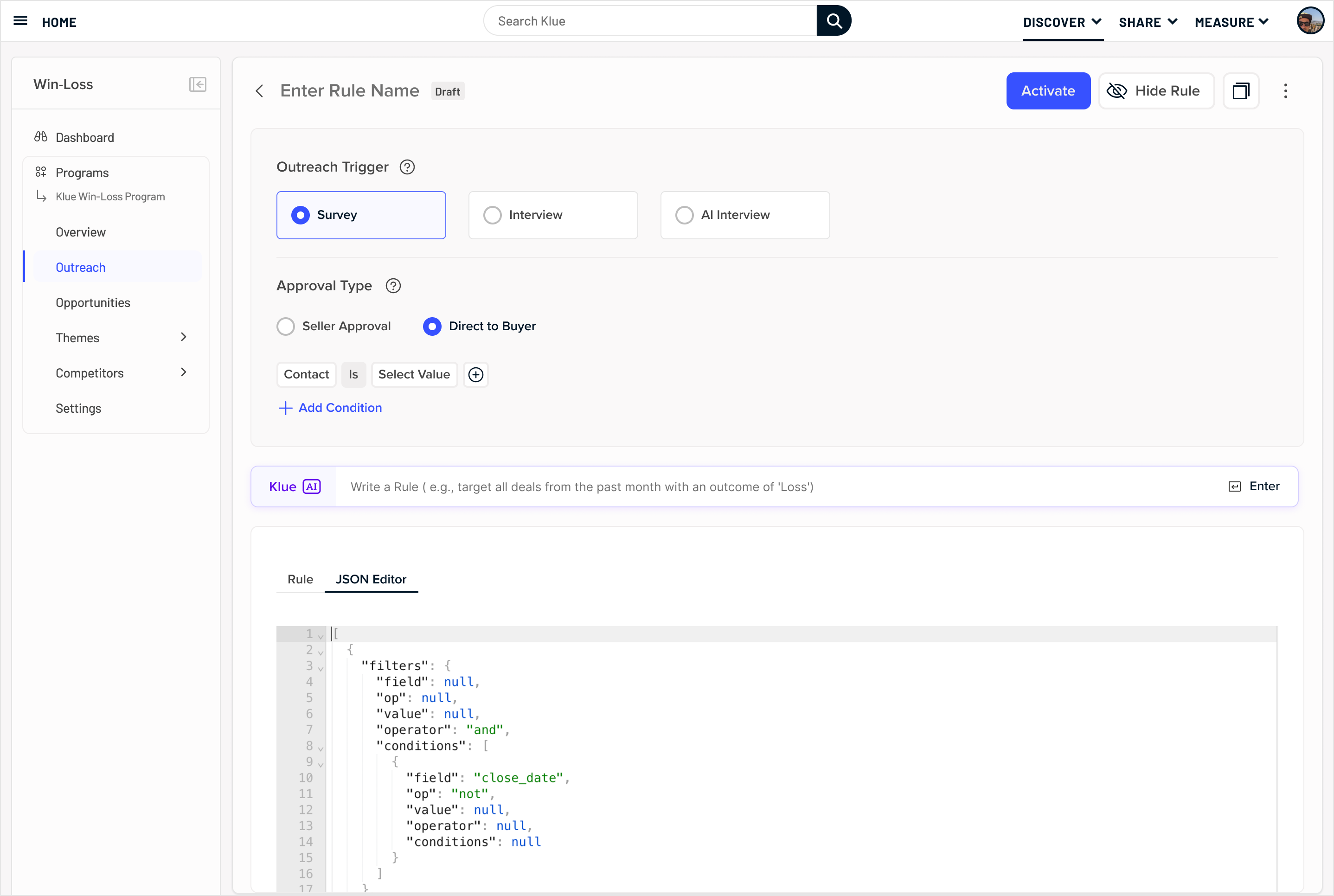
Impact.
Results
The redesign reduced the average setup time for outreach automation from 51 days to just 13 days. Customers gained full visibility into rule status and performance, while set up error rates dropped by 85%, significantly improving efficiency, confidence, and overall both customer and internal team experience.
75%
Faster set up time